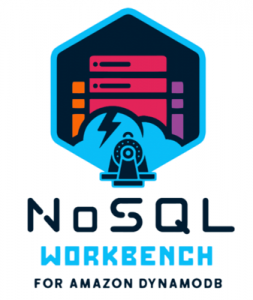Let us take a closer look at the AWS DynamoDB NoSQL workbench and the configurations and how to use it with the support of our AWS support services at Bobcares.
What is NoSQL Workbench for DynamoDB?

Amazon NoSQL Workbench DynamoDB is a client-side GUI program for modern database development and operations that is cross-platform and available for Windows, macOS, and Linux.
NoSQL Workbench is a single visual IDE tool that includes capabilities for data modeling, data visualization, and query creation to assist in designing, creating, querying, and managing DynamoDB tables.
The Key features are as follows:
- Data Modeling: Workbench provides us with the ability to create new data models from scratch or to reuse current data models. We can design various patterns that can be combined to get data on the dataset.
- Data Visualization: As the name implies, it is the act of creating queries and obtaining data from its medium rather than coding it bit by bit.
- Operation Building: Workbench is a solid and dependable platform for developing applications. It features an excellent graphical user interface, which facilitates communication between the database and the user.
Using DynamoDB on the local with NoSQL Workbench
Let us set up a DynamoDB for local development and use the provided UI to explore the data we work with by going through the whole process.
Getting started
Firstly, we have to make a new project directory in which to work. Type in the following code to configure up the new project:
1# Make project directory2
mkdir hello-dynamodb-local3cd
hello-dynamodb-local4
# Add some simple files to work with
mkdir src
touch src/index.js
# Create new npm package to work with
npm init -yGo to the AWS documentation website and copy a DynamoDB version into the project directory. Note that here we will download the Oregon zip file.
Make certain that the folder is unzipped into the project directory. We must copy the DynamoDBLocal lib and DynamoDBLocal.jar files into the project directory root.
Now execute java -Djava.library.path=./DynamoDBLocal lib -jar DynamoDBLocal.jar -sharedDb to start the database.
In this section, we will include that line as a script in the package. json document:
{
"scripts": {
"start:db": "java -Djava.library.path=./DynamoDBLocal_lib -jar DynamoDBLocal.jar -sharedDb"
}
}First, look after running DynamoDB
Now that our script is in package.json, we can execute npm run start:db to get it running:
$ npm run start:db
> hello-dynamodb-local@1.0.0 start:db /[REDACTED]/hello-dynamodb-local
> java -Djava.library.path=./DynamoDBLocal_lib -jar DynamoDBLocal.jar -sharedDb
Initializing DynamoDB Local with the following configuration: Port: 8000
InMemory: false
DbPath: null
SharedDb: true
shouldDelayTransientStatuses: false
CorsParams: *
2020-12-24 09:08:30.030:INFO::main: Logging initialized @1270ms to org.eclipse.jetty.util.log.StdErrLogWhen it is up and running, we can use the AWS CLI to interact with our table locally.
Executing
aws dynamodb list-tables --endpoint-url http://localhost:8000{
"TableNames": []
}Despite the fact that we presently have no tables, we are having success setting them up.
Setting up NoSQL Workbench
AWS also provides a NoSQL Workbench program that can serve as a graphical user interface for us to use.
We can try it out by going to the NoSQL Workbench installation page and download the system program.
Adding a Table via the NoSQL Workbench
If we go to Amazon DynamoDB on the left-hand side panel after opening the workbench, we will see several sample models that we can hover over and import.
Now, we can use the command aws dynamodb list-tables —endpoint-url http://localhost:8000. We’ll notice that the data has been imported into the local database:
1{2 "TableNames": ["Forum", "Reply", "Thread"]3}Running queries with the NoSQL Workbench
Select the Operation builder on the left-hand side panel to perform queries locally.
Once there, select Add Connection, then pick the DynamoDB local tab and confirm that the details for the localhost port are accurate before adding the connection.
Return to the Amazon DynamoDB tab and open the AWS Discussion Forum Data Model by hovering over it. This brings us to the Data modeler. Select Visualize data model to open the Visualizer from this menu. Finally, choose Commit to Amazon DynamoDB, and from the Saved connections menu, choose the localhost instance to which we want to commit the tables.
Now we can choose the Forum table in the operation builder and open the connection. Exploring the table’s data offers us an idea of some simple queries we can run.
We may then enter a value such as Amazon MQ into the needed Partition key value by selecting the Expand operation, GetItem from the data plane operations menu, and Forum from the table dropdown.
In addition, if we choose to Generate code, NoSQL Workbench will generate some code in Python, JavaScript, and Java for us to utilize or be inspired by.
We can now plan out our tables and run CRUD operations to test them from the NoSQL Workbench and our local DynamoDB instance.
[Need assistance with similar queries? We are here to help]
Conclusion
To conclude, we learned more about the AWS DynamoDB NoSQL workbench, built up a simple way to run DynamoDB locally from a simple project, investigated the NoSQL Workbench, and performed a basic GetItem request to demonstrate how we can connect with the local DynamoDB with the support of our AWS support services at Bobcares.
PREVENT YOUR SERVER FROM CRASHING!
Never again lose customers to poor server speed! Let us help you.
Our server experts will monitor & maintain your server 24/7 so that it remains lightning fast and secure.







0 Comments